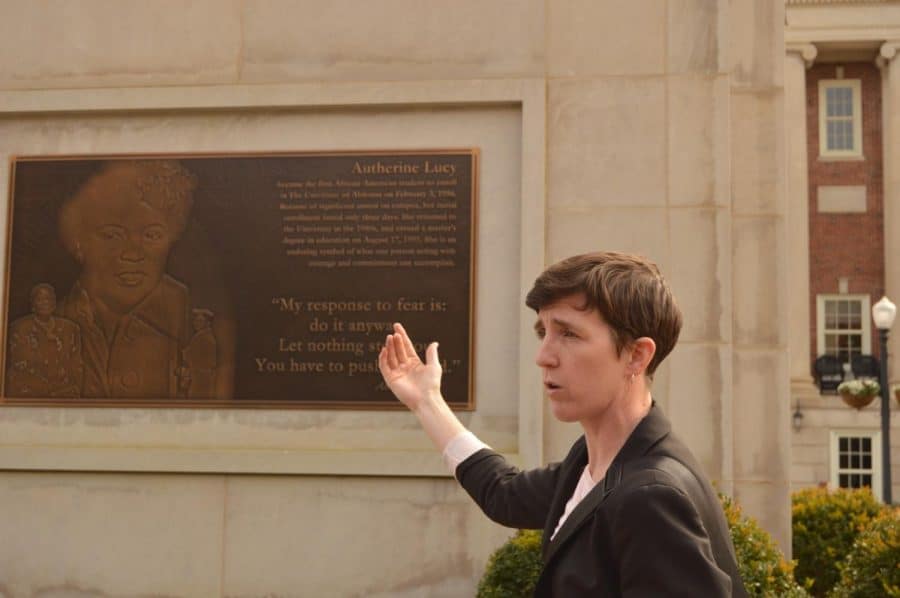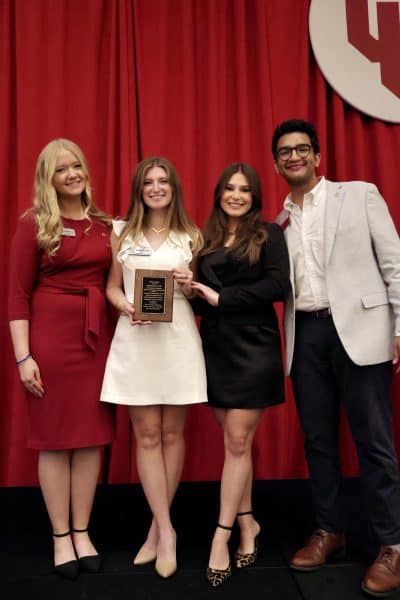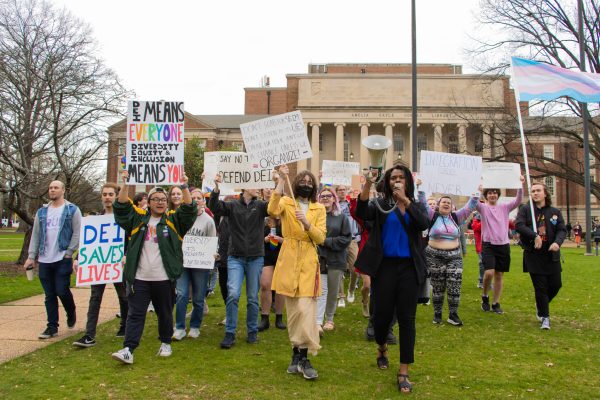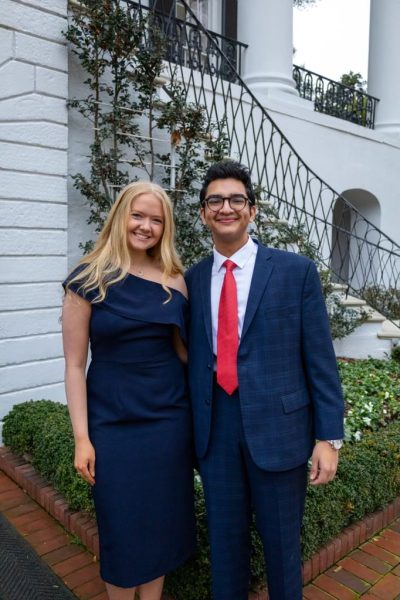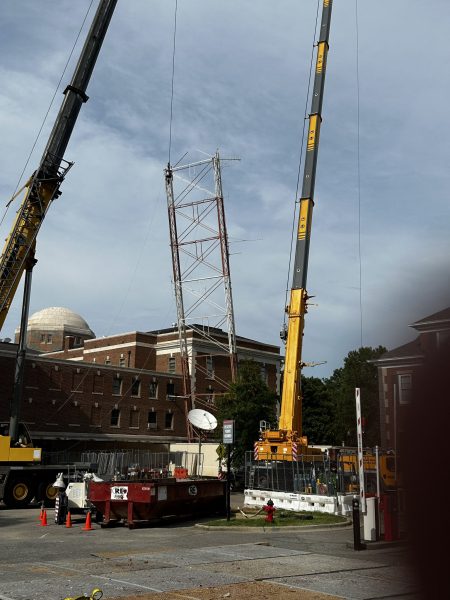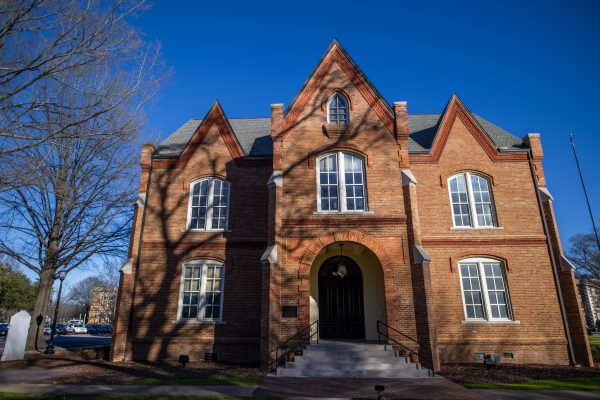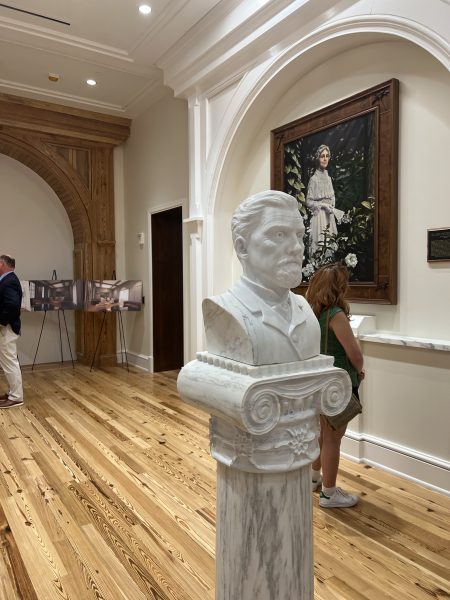Campus desegregation shown in Foster tour
February 28, 2019
Integration on The University of Alabama’s campus began on Feb. 3, 1956, when the first African-American student attended. That student was Autherine Lucy Foster.
Foster was the first African-American to be admitted into the University, but she faced many difficulties during her journey after admittance.
Foster began her registration process in 1952 with the goal of becoming a children’s librarian. She was not admitted until four years later in 1956, and then she was able to attend for only three days before being expelled because the University was unable to protect her from mobs who disagreed with desegregation.
Her expulsion was eventually lifted in 1988, and this led Foster to then earn her master’s degree in education in 1992.
Meredith Bagley, associate professor for communication studies, is the sponsor of Forgotten Hero: The Autherine Lucy Foster Campus Tour. The tour furthered participants’ knowledge of Foster’s trailblazing efforts in the face of adversity. The tour took place on each Tuesday of February to celebrate Black History Month.
Bagley said she does the tour as a part of her research, teaching and service. She strives for students to be aware of the historical spaces they walk past on campus every day and to know the overall significance of what is surrounding them.
“It’s one of the underappreciated stories on campus,” Bagley said. “It’s more known and more appreciated today than it was when I first got here. I would hope that my tours have been part of that.”
Bagley said the goal of this tour is for the participants to learn the facts of what happened during Foster’s journey since people are often unaware. The tour teaches about a public memory that put the University in a bad light.
“It’s a complicated story to tell,” Bagley said. “It’s a difficult story for UA to tell. UA doesn’t look very good in this story, so I think it’s a space where faculty and students can tell the story because we can explore it for learning goals and the academic kind of principles of it, so I’m very pleased to do it for those reasons.”
Beginning the tour at Foster Auditorium, Bagley shared the story of how Gov. George Wallace blocked the doors from Vivian Malone and James Hood to enforce his segregation beliefs in 1963. Wallace was defeated, as the two students were able to attend. However, this took place seven years after Foster had her experience at the University.
Bagley guided the tour over to the Autherine Lucy Clock Tower that was dedicated in 2010, focusing the tribute on Foster, Malone and Hood. As the tour made its way to Denny Chimes, Bagley illustrated a picture of Foster’s schedule for the attendees. Each step Foster took on her first day was analyzed, and people on campus knew where she was and where she was heading throughout the following days.
Various people on campus disagreed with Foster attending the University, which then led to mobs forming and jeopardizing Foster’s safety. As Foster finished one class, people were waiting for her at her next building.
During the first three days Foster attended, she was escorted by police to her classes. She then had to be driven from building to building due to large crowds blocking the Quad.
The tour then traveled to the throughway at Graves Hall and the McLure Library, an area students walk by every day. Here, Bagley created a vision for the attendees about the emotion and fright Foster must have felt on her third day of school at the University.
On Feb. 6, 1956, Foster became trapped under the threat of the mob for four hours in Graves Hall and then was moved to the throughway toward McLure. As she was entering the building to seek safety, a brick was thrown at her head but missed her. The mob grew to thousands of people who were shouting disheartening chants about Foster and throwing things at the building.
Foster was able to escape later as the crowd turned its attention to a small fender bender outside of Reese Phifer Hall. This gave Foster the opportunity to run out of the back of McLure, dive into the back of a car with her face down and evacuate from campus. She was suspended that day, and then expelled for her safety.
“That’s how she leaves our campus as a student in February 1956,” Bagley said. “This woman has never said anything on the record negative about UA. Do you see why she’s one of my heroes?”
The tour concluded in front of Graves Hall, where a historical marker was put up to honor Foster in September 2017, 61 years after the events took place. This is the most recent telling of Foster’s story; however, Bagley did bring attention to how historical markers usually have dates they were installed, but this one does not.
Bagley said she believes this historical marker represents Foster’s experience strongly and accurately.
Ashley Henson, a junior majoring in communication studies and marketing, looks up to Foster.
“I’ve read a lot about her in my different classes and done some research online as well, and her quote that’s on the clocktower I’ve always thought is really like amazing and inspiring,” Henson said.
Henson said Foster is a driven and inspiring figure. She enjoyed the tour and continues to look up to Foster.
“She never really did anything that was incendiary,” Henson said. “She just wanted to come to classes and then all these things happened to her and then she wasn’t able to. The fact that she came back and finished her degree after all that time, I think, is really amazing.”
Kylie Lyall, a senior majoring in public relations and communication studies, attended the tour and said she had personally never heard of Foster before.
“After going through the tour, I am super, super impressed and definitely look up to her courage and boldness in what she stepped into, being the first African-American to enroll in this university,” Lyall said.
Lyall said Foster opened the door of courage for others to come, and she set the example for everyone to follow their passion. Lyall said she was pleased with the way Bagley portrayed the story of Foster and illustrated the exact steps Foster took.
Though Bagley wishes the tour could be available each month of the year, she said she cannot do it on her own. She said this is a collective effort and encourages those interested to get involved to help others further their knowledge of history on campus.
“I think Dr. Bagley did an exceptional job in creating an environment that truly tells a story start to finish,” Lyall said.

